OS - macOS: Difference between revisions
No edit summary |
No edit summary |
||
| Line 47: | Line 47: | ||
Your Phidget is now able to communicate with your development machine. The next step is selecting a programming language so you can start to write some code! | Your Phidget is now able to communicate with your development machine. The next step is selecting a programming language so you can start to write some code! | ||
''If you do not see your device in the Phidget Control Panel, visit the [[General | ''If you do not see your device in the Phidget Control Panel, visit the [[General Troubleshooting|general troubleshooting page]].'' | ||
===Programming=== | ===Programming=== | ||
Revision as of 19:05, 28 April 2017
Quick Downloads
Already know what you're doing? Here you go:
Getting Started with macOS
Welcome to using Phidgets with macOS. If you haven't already, check out the user guide for your device. If you are ready to go, the first step in creating macOS applications with Phidgets is installing the Phidget libraries!
Install
To install the core Phidget files onto your system, follow these steps:
1. Download the Phidget installer for your system:
2. Open up the installer, and double click on Phidgets.pkg to install the libraries.
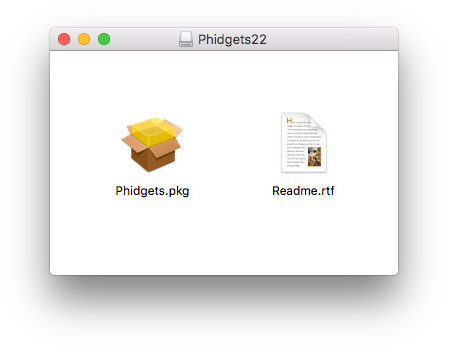
3. Continue with the installation.
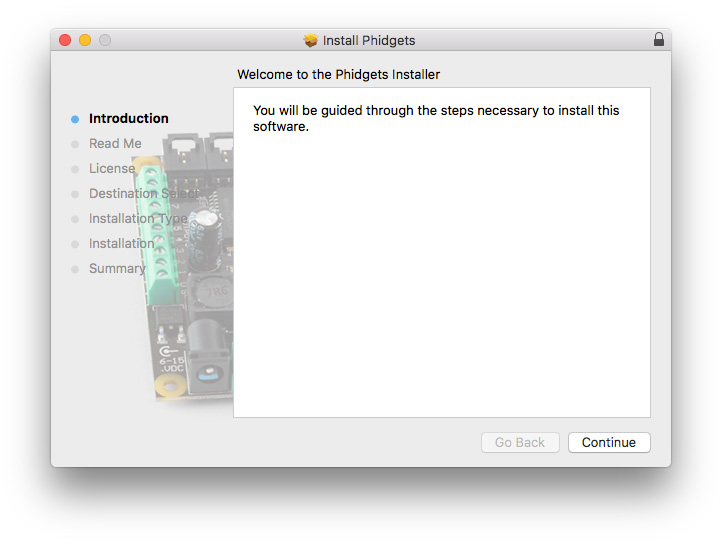
Success! You have finished installing the Phidgets software on your machine. Before you begin coding, let's verify that your Phidget is able to communicate with your machine.
Verify
The best way to verify that your libraries are installed and your Phidget is working is to use the Phidget Control Panel. The Phidget Control Panel is a powerful tool that will help you develop your applications using Phidgets. Get started by following the instructions below:
1. Open Finder and navigate to the Phidget Control Panel in the Applications list.
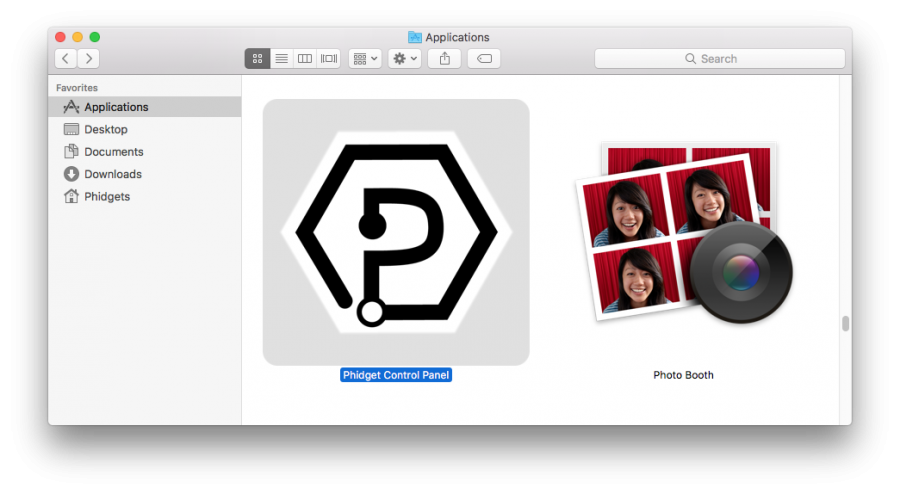
2. Double click on the Phidgets icon to bring up the Phidget Control Panel. You can now see all the Phidgets that are plugged into your machine, as well as any Phidgets that are on the network.
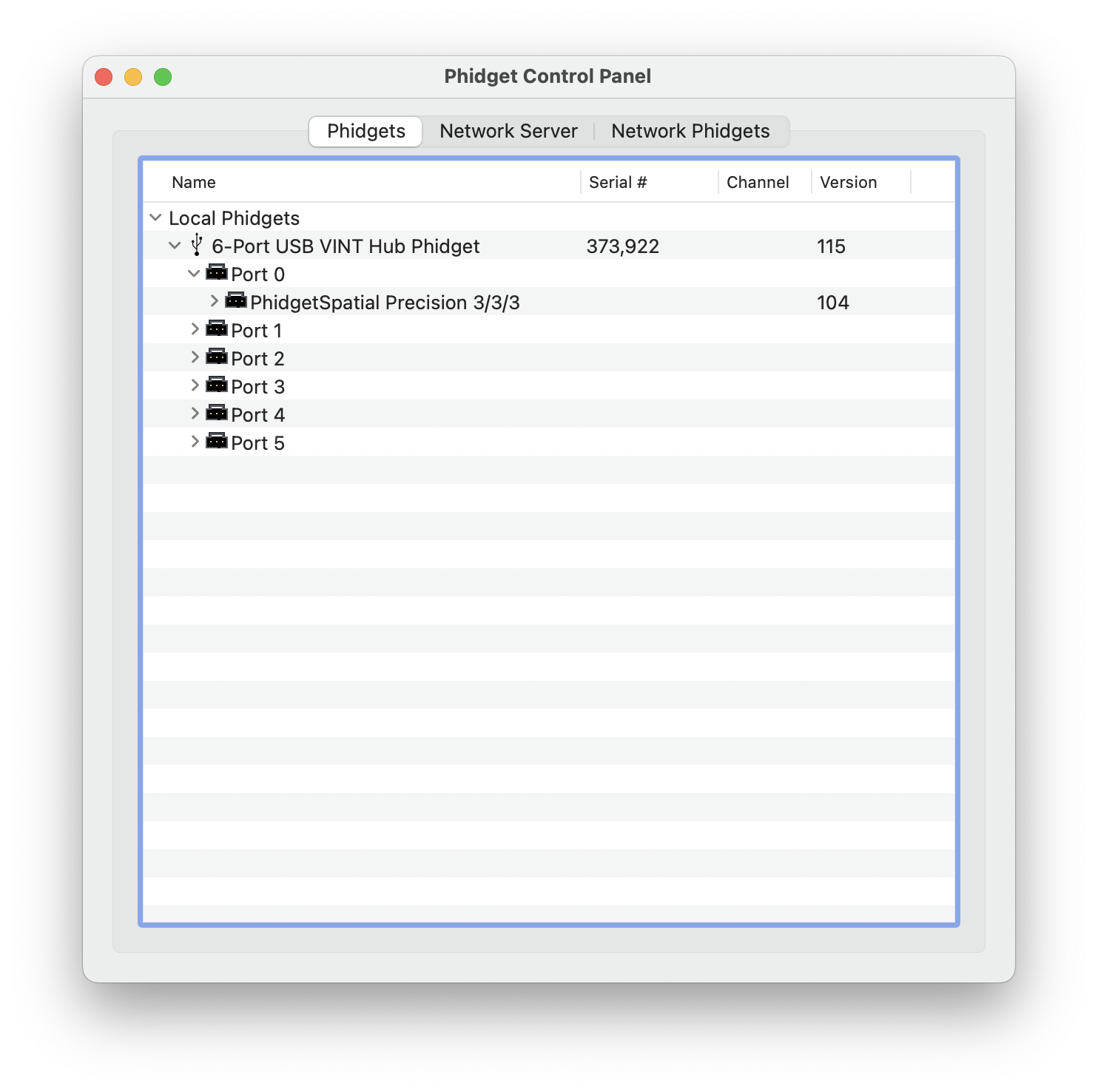
3. Click on the arrow beside a device to expand it so that you can see all available channels. Double click on one of these channels to open up a window that lets you interact with it.
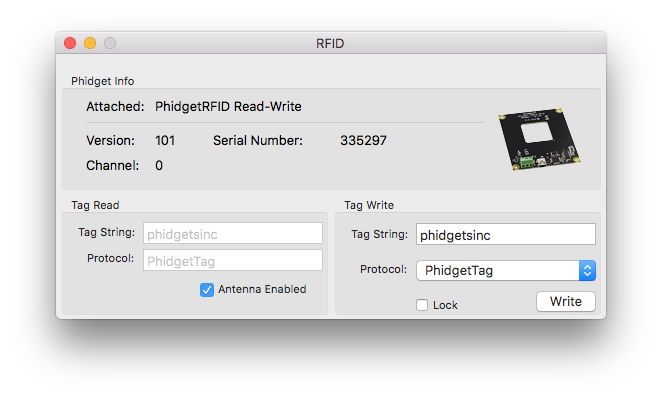
The Phidget Control Panel can be used for testing devices, updating firmware, enabling a network server, and more! Visit the Phidget Control Panel page if you want to delve a little deeper.
Your Phidget is now able to communicate with your development machine. The next step is selecting a programming language so you can start to write some code!
If you do not see your device in the Phidget Control Panel, visit the general troubleshooting page.
Programming
Ready to write some code? Select one of the programming languages below:
Phidget Network Service
The Phidget Network Service allows you to remotely control Phidgets over a network. For more information, please see the Phidget Network Service page.
Drivers for the Phidget Network Service on macOS are already included in the Drivers above. If you have the Phidget Control Panel app installed, you already have the Network Service installed.
There are two ways that you can connect to a Phidget hosted on another computer. The first method is by using the IP address/host name and port of the host computer. The second method makes the use of mDNS, which allows Phidgets to be found and opened on the network by a server id instead of an IP address/host name. When using a server id, both the client and server will need to be running an implementation of zero configuration networking. The Phidget Network Service takes advantage of the Bonjour software, which is built-in to macOS. It is a tool developed by Apple to locate devices, such as Phidgets, on a network.
This section helps you install, check, and use the Network Service on macOS, but we also have an overview of the Phidget Network Service in general.
Using the Network Service
To use a Phidget over the Network Service, you'll want to:
- Have two different computers connected to the same network. We will call the computer that has the Phidget directly connected to the USB port the host. The client will be the computer that runs a Phidget application to connect to the Phidget attached to the host. Please note that if you only have a single computer, you can also connect to the Phidget over the Network Service. The computer will simply act as both a host and client. This will allow you to bypass the one application per Phidget limitation.
- Start the Network Service on the computer that directly connects to the Phidget
- Run your program on the remote computer that will control the Phidget over the network
First ensure that the Phidget drivers have been installed on both the host and client computers. Next, we will set up the Network Service and run the Phidget example program on the client. Please follow these steps:
1. On the host computer, double click on the ![]() icon in the Apps list to bring up the Control Panel. In the
icon in the Apps list to bring up the Control Panel. In the Network Service tab, you can start, restart or stop the Network Service. You can also choose to have the Network Service start up automatically upon boot up by checking the box beside Start automatically on boot. Otherwise, you will have to manually turn the Network Service on everytime you wish to use it. You'll need administrator privileges in order to make changes to these settings. You can see the status of the Network Service at the top of the window beside the Start/Stop button, where it will say "Network Service is running" or "Network Service is stopped".
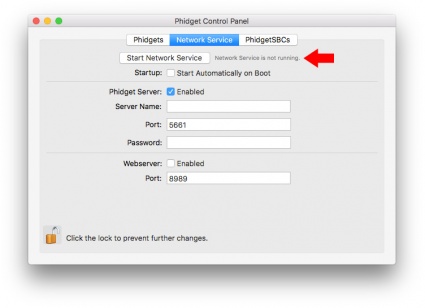
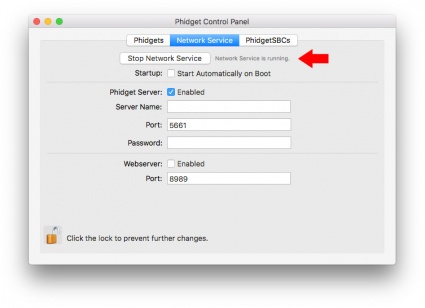
2. Ensure that the Phidget is plugged in to the host.
3. On the client computer, open up the Phidget Control Panel. On the Phidgets tab you will see the Phidget that is plugged into the host as one of the entries listed under the heading of Remote Server: <Hostname>. Double click on one of the Phidget's objects to open the example application.
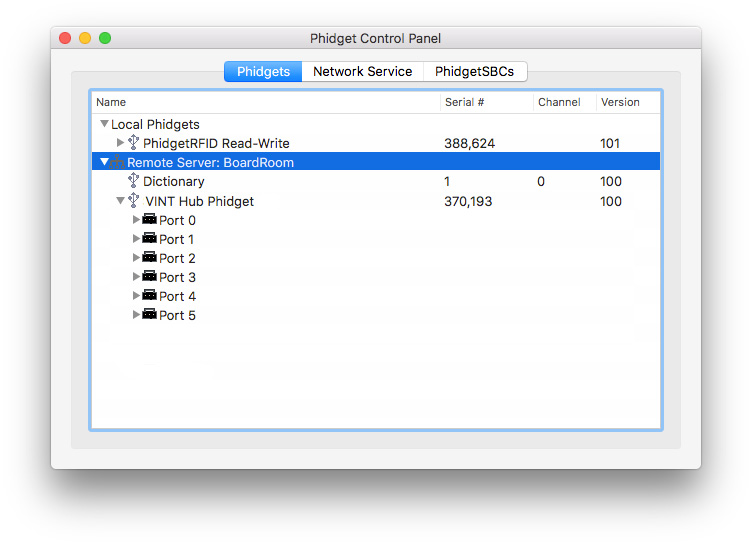
4. The example application will open up, and you will be able to communicate with the Phidget over the Network Service.
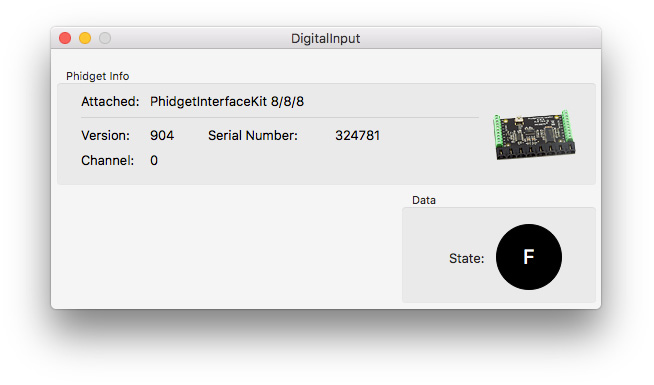
5. You can confirm that this Phidget is truly being used of the Network Service by stopping the Network Service while the example application is still open. On the host's Phidget Control Panel, go to the Network Service tab and hit Stop Network Service to terminate the Network Service. Now, take a look at the example application on the client. Since the application can no longer find this Phidget over the Network Service, all of the information disappears and the window says that "Nothing" is attached to this channel.

Advanced Information
These files that were placed onto your system as part of the installation process:
Phidget22.frameworkcontains the actual Phidget library, which is used at run-time. It is placed into/Library/Frameworks.Phidget.kextis the kernel extension. It is placed into/System/Library/Extensions.phidgetnetworkservice22is the Phidget Network Service. It is placed into/usr/local/bin.
